For decades, the passionate roar of a British crowd, the thwack of leather on willow, and the thundering hooves at Aintree were experiences felt, not measured. Betting was a pastime built on gut instinct, loyalty to a team, and the tip from a mate in the pub. It was romantic, but it was also, fundamentally, a gamble.
Then, the digital age arrived, and with it, a silent, relentless revolution. The introduction of in-play betting, the sophistication of online exchanges like Betfair, and the voracious appetite of a new breed of participant—the sports trader—ushered in a new currency: data.
This is no longer the world of simple win-lose-draw coupons. Today, the UK’s sports trading market is a high-stakes, hyper-competitive digital arena where milliseconds matter, historical patterns predict future outcomes, and access to pristine, real-time data isn’t just an advantage—it’s the absolute bedrock of success.
This deep dive explores the intricate ecosystem of sport trading market data in the UK. We’ll unpack what it is, where it comes from, who the key players are, how it’s used to craft winning strategies, and the future trends set to redefine the game once again.

Understanding the Data Universe
Before we can understand the market, we must define its fuel. Sport trading data is a multi-layered concept, encompassing everything from the basic scoreline to complex, derived metrics that model probability in real-time.
1. The Core Data Types:
- Pre-Match (Pre-Game) Data: This is the foundation, the intelligence gathered before a ball is kicked or a race is run. It includes:
- Historical Data: Years, sometimes decades, of past results, head-to-head records, player/team performance metrics (goals scored, possession stats, finishing percentages, etc.), and venue-specific statistics.
- Team News & Lineups: The confirmed starting XI, absent players due to injury or suspension, and even the tactical formation. This single piece of information can cause massive market swings moments before kick-off.
- Contextual Data: Weather conditions (crucial for cricket, horse racing, and football), managerial changes, and off-pitch drama that could affect player mentality.
- In-Play (Live) Data: This is the heartbeat of modern trading. It’s the real-time stream of events from the sporting arena:
- Primary Events: Goals, corners, red and yellow cards, wickets, points scored, runs. Each event directly and instantly impacts the odds.
- Secondary Events (The “Underlying” Data): This is where the edge is now found. It includes:
- Football: Shots on/off target, expected Goals (xG), possession percentage, pass completion rates in the final third, field tilt (which team is attacking more).
- Tennis: First-serve percentage, break points won/saved, unforced errors, rally length.
- Cricket: Run rate, required run rate, dot ball percentage, pitch maps showing where the ball is landing.
- Market Data: The odds themselves are data. The movement of prices across various bookmakers and, most importantly, on the betting exchanges, provides a meta-layer of information on market sentiment and where the “smart money” is flowing.
2. The Sources: Where Does This Data Come From?
The journey of a single piece of data—say, a goal in a Premier League match—from the pitch to a trader’s screen is a technological marvel.
- Data Collection Companies (The “First-Party” Source): Firms like Sportradar and Stats Perform are the giants in this space. They employ thousands of trained data scouts worldwide. These scouts are stationed at grounds, watching the action live and inputting coded events (e.g., “SHOT-ON-TARGET-HOME-9”) into specialised software in real-time. Their accuracy and speed are paramount. Other companies use sophisticated computer vision and AI to automate this collection from broadcast feeds.
- The Betting Exchanges (The Marketplace): Betfair is the undisputed king of the UK exchange scene, with Smarkets as a notable competitor. They don’t just facilitate bets; they generate a colossal amount of priceless data. The Betfair API provides a live feed of every matched bet, its size, its price, and the state of the order book (all unmatched bets). This data is a direct reflection of market sentiment and liquidity.
- Bookmakers: While less transparent than exchanges, the odds offered by traditional bookmakers like Bet365, William Hill, and Ladbrokes are aggregated by odds comparison sites (e.g., Oddschecker), providing a snapshot of the available prices and helping identify arbitrage opportunities.
- Specialised Data Providers (The Aggregators & Analysts): Companies like Betfair Data (which packages the exchange’s API data), Football Data UK, and a host of smaller, niche firms purchase data from the primary collectors, clean it, structure it, and sell it on to traders, often through bespoke feeds or historical databases.
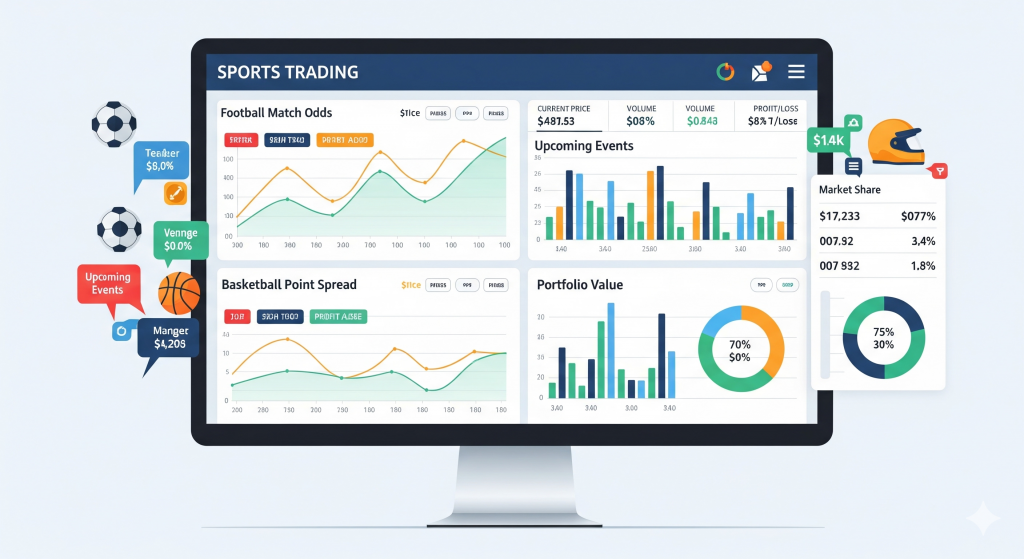
The Arena and The Gladiators – The UK Trading Landscape
The UK is the global epicentre of sports trading, thanks largely to the early legalisation and embrace of betting exchanges. This has created a diverse ecosystem of participants.
1. The Retail Trader
The individual, working from their home computer. They might use a combination of free data (odds comparison sites, basic live score apps) and paid-for services (advanced statistical models, trading software that connects to the Betfair API). Their edge comes from niche specialisation, discipline, and leveraging the tools once reserved for professionals.
2. The Professional Trading Firm
These are the hedge funds of the sports world. They operate out of offices, employing teams of quants, data scientists, and traders. They have direct, high-speed API connections to data providers and exchanges, run complex algorithmic models, and execute thousands of trades per second. Their capital and technological advantage are immense, and they are a dominant force in liquid markets like Premier League football.
3. The Syndicates
Groups of individuals who pool their capital, knowledge, and resources to gain an edge similar to a professional firm. They often specialise in one sport or even one type of market (e.g., horse racing favourites).
4. The Betting Operators themselves
Bookmakers and exchanges are not passive platforms. Their trading teams use the same data to manage their own risk, balance their books, and set their odds, ensuring they remain profitable regardless of the outcome.

The Trader’s Toolkit – How Data is Used in Practice
Raw data is meaningless without interpretation. Here’s how traders transform this stream of information into actionable strategies.
1. Pre-Match Analysis & Model Building
The serious trader would never enter a market blind. They use historical data to build statistical models that calculate their own “true” odds for an event.
- A football trader might build an Expected Goals (xG) model, factoring in a team’s average xG for and against, home/away form, and player quality. If their model prices a home win at 2.10 (implied 47.6% probability), but the market is offering 2.50 (40%), they identify this as a value bet and will back the outcome.
- A tennis trader might model a player’s serve hold probability based on surface, opponent’s return stats, and recent form.
2. In-Play Trading (The “Lay the Draw” and Beyond)
This is the most common application for live data. The classic example is the “Lay the Draw” strategy in football.
- The Theory: Before kick-off, a trader will lay the draw (bet that the match will NOT end in a draw) at high odds. They are betting that a goal will be scored.
- The Data Execution: They don’t just hope. They monitor the live underlying data. If their pre-match analysis suggests a high-scoring game and the live data shows both teams attacking, with a high xG and multiple shots on target, their conviction grows. The moment a goal is scored, the odds for the draw plummet. The trader then backs the draw at much lower odds to guarantee a profit regardless of the final result. Their profit is the difference between the two prices.
- Advanced In-Play: Professionals use algorithms that are triggered by specific data events. For example: “IF a red card is awarded to the home team BETWEEN the 20th-60th minute, THEN back the away team.” The human trader can’t compete with the speed of a machine receiving this data feed directly.
3. Arbitrage and “Sure Bets”
Arbitrage involves exploiting minute discrepancies in odds between different bookmakers or between a bookmaker and an exchange. This requires real-time data feeds from odds comparison engines to spot these fleeting opportunities, which are often closed by the bookmakers’ own algorithms within seconds.
4. Sentiment Analysis
By analysing the volume and size of bets being placed on the exchange (a huge data set in itself), traders can gauge market sentiment. A steady stream of large bets (“smart money”) on one outcome, even if the odds aren’t moving dramatically yet, can be a powerful signal to follow.
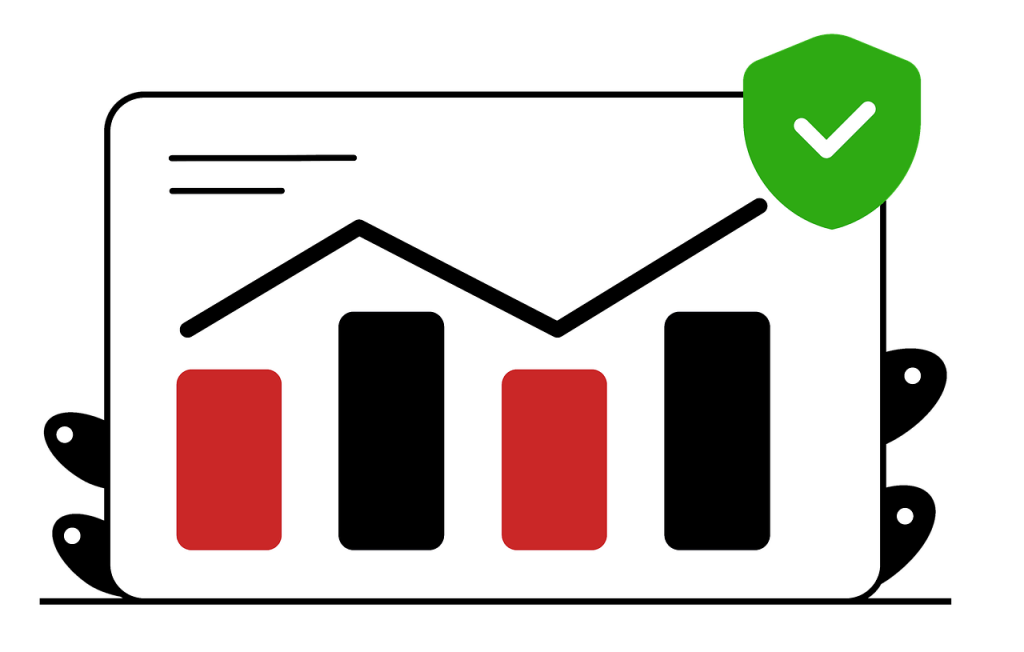
Navigating the Storm: Challenges and Ethical Considerations
The data-driven trading world is not a guaranteed path to riches. It’s fraught with challenges.
- Latency: The Need for Speed: In a world where profits are made on tiny price movements, the speed of your data feed is everything. A delay of even 500 milliseconds in receiving a goal alert can be the difference between a profitable trade and a significant loss. Professional firms invest six-figure sums in co-located servers (placing their servers physically next to the exchange’s servers) to minimise latency. The retail trader is always at a speed disadvantage.
- Data Overload and Paralysis: It’s possible to have too much information. A trader staring at 20 different metrics on two screens can suffer from analysis paralysis, missing the obvious, simple trades while searching for complex patterns.
- The Cost of Quality Data: While basic data is cheap or free, the high-quality, low-latency, deep historical data needed for building robust models is expensive. This creates a barrier to entry and reinforces the advantage of well-funded professionals.
- The Rise of the Machines: Algorithmic trading now dominates the most liquid markets. For a human, competing against hundreds of algorithms designed to spot and exploit inefficiencies in microseconds is incredibly difficult. The human edge now lies more in pre-match analysis, modelling, and trading less liquid markets (lower leagues, niche sports).
- The Ethical Debate: The line between informed trading and insider trading can be blurry. Is it ethical to act on team news from a social media leak seconds before it’s officially announced? The use of data is also often criticised for sucking the joy and spontaneity out of watching sport, turning it into a cold, mathematical exercise.
The Future: AI, Micro-Markets, and Beyond
The evolution of sports data is accelerating. The next frontier is already here.
1. Artificial Intelligence and Machine Learning
AI is moving beyond simple modelling. Machine learning algorithms can now ingest thousands of historical games, learn non-obvious patterns, and make probabilistic predictions that far exceed human capability. They can factor in thousands of variables, from a player’s body language in pre-match warm-ups to the impact of a specific referee’s tendency to award penalties.
2. Predictive Modelling with Unstructured Data
The next wave involves analysing data that isn’t easily categorised. AI can now analyse video footage to track player movements off the ball, assess fatigue levels, and even read body language to predict performance slumps or injuries before they happen.
3. The Explosion of Micro-Markets
Trading will move beyond match outcomes. We will see liquid markets for minute-by-minute events: “Next throw-in,” “Number of passes in the next 60 seconds,” “Next point won by a forehand winner.” These hyper-specific markets will be entirely driven and traded by AI systems processing real-time visual data.
4. Personalised Data Feeds
Traders will no longer buy generic data feeds. They will subscribe to bespoke feeds that deliver only the specific metrics relevant to their unique trading model, filtered and prioritised by AI.
5. Blockchain and Decentralised Markets
Some believe the future lies in decentralised betting exchanges running on blockchain technology. This could make market data even more transparent and immutable, while also reducing trading fees.
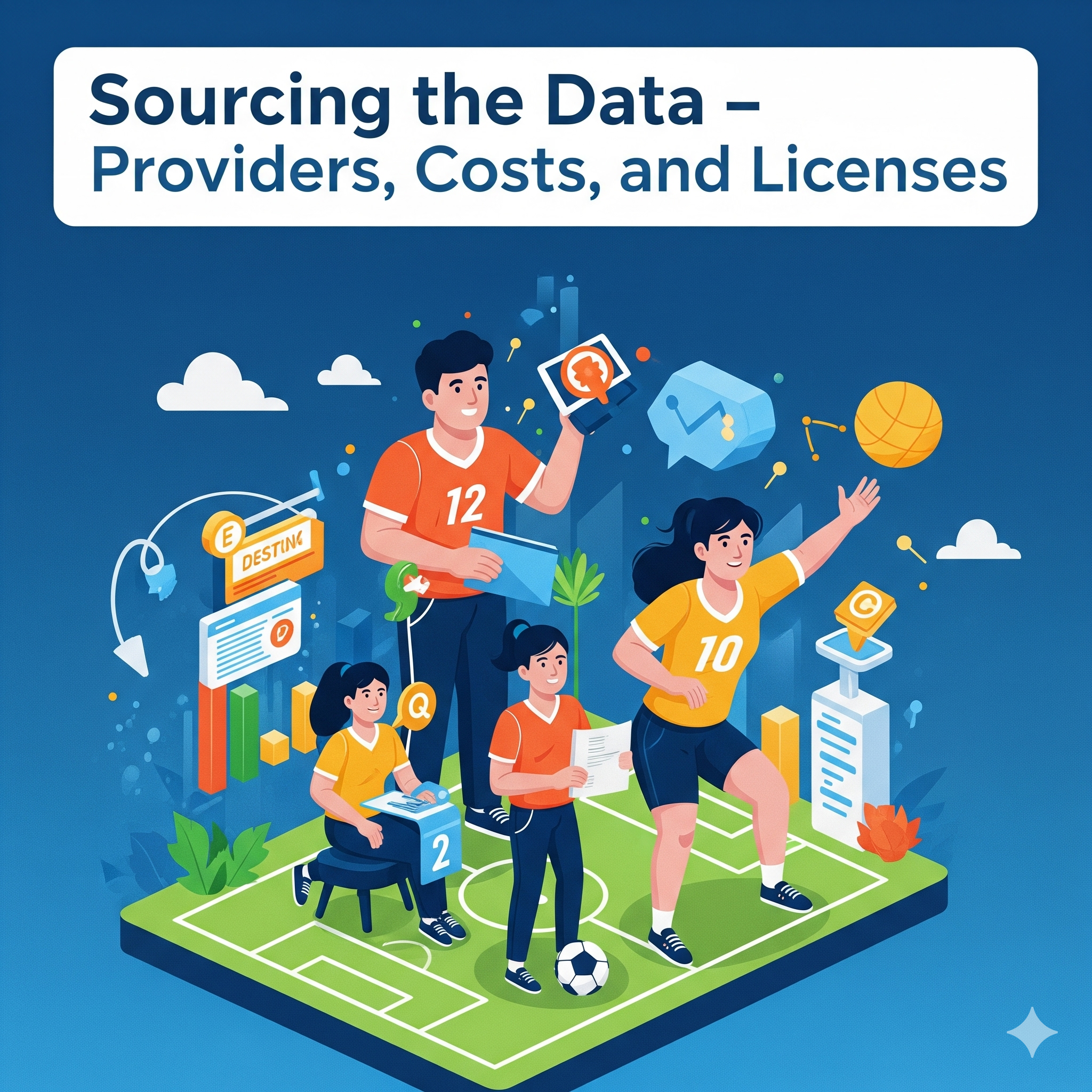
Sourcing the Data – Providers, Costs, and Licenses
Accessing high-quality sports trading data is crucial for success. Here’s a breakdown of prominent providers, what they offer, typical costs, and licensing considerations in the UK.
1. Betting Exchanges – Direct from the Source
For market data, betting exchanges are your primary and often most cost-effective direct source.
- Betfair API (via Betfair Developer Program)
- What it offers: Real-time market data (odds, matched bets, order book depth) for a vast array of sports. It’s the most liquid exchange in the UK and globally.
- Cost:
- Free Access: Limited historical data and delayed market data are often available for free or at very low cost for personal, non-commercial use.
- Subscription (Commercial Use): For real-time, high-volume access, especially for professional trading firms, a subscription to the Betfair API-NG is required. Costs can range from £200 to £1,000+ per month, depending on usage, data volume, and the level of support needed. Enterprise solutions can be significantly higher.
- License Type: Typically a commercial license for professional trading, often with specific terms around redistribution and data storage. Personal use licenses are generally more permissive.
- Hyperlink: https://developer.betfair.com/
- Smarkets API
- What it offers: Real-time market data from the Smarkets exchange, known for its competitive commissions and diverse markets.
- Cost: Similar to Betfair, a free tier might exist for basic or delayed access, while commercial API access for real-time data will incur a monthly fee, potentially ranging from £100 to £500+, depending on usage and data volume.
- License Type: Commercial API license with specific usage terms.
- Hyperlink: https://smarkets.com/developers/
2. General Sports Data Providers
These companies collect and distribute comprehensive historical and real-time event data across numerous sports.
- Sportradar
- What it offers: Extensive pre-match and in-play data, including primary events (goals, cards, corners), secondary events (shots on/off target, possession), player statistics, and historical results across football, basketball, tennis, and many other sports. They are a major provider for sports books and media companies globally.
- Cost: Highly variable and often bespoke, depending on the sport, data depth, latency requirements, and license scope. Expect thousands to tens of thousands of pounds per month for high-tier real-time feeds.
- License Type: Primarily commercial licenses tailored to specific business needs (e.g., betting, media, fantasy sports), with strict usage and redistribution clauses.
- Hyperlink: https://sportradar.com/
- Stats Perform (Opta Sports)
- What it offers: Renowned for deep, granular football data (Opta data), including advanced metrics like xG, pass maps, and player tracking. They also provide data for rugby, cricket, and other sports.
- Cost: Similar to Sportradar, pricing is customised based on data volume, sports covered, and usage. Thousands to tens of thousands of pounds per month for enterprise solutions.
- License Type: Commercial licenses with detailed terms regarding data use, display, and intellectual property.
- Hyperlink: https://statsperform.com/
3. Specialised Data Providers & Aggregators
These firms often buy data from primary collectors, refine it, and offer it in more accessible formats or with additional analytical layers.
- Football-Data.co.uk
- What it offers: Primarily historical football results and statistics for various UK and European leagues, often available in CSV format. A valuable resource for building historical models.
- Cost: Many datasets are free for personal use. Some more detailed or updated datasets might have a nominal fee or require a donation.
- License Type: Generally personal/non-commercial use. Check their terms for commercial usage, which may require attribution or a specific agreement.
- Hyperlink: https://www.football-data.co.uk/
- Oddschecker (for aggregated odds data)
- What it offers: While not a direct data provider in the same vein as Sportradar, Oddschecker aggregates odds from numerous UK bookmakers. Their website can be scraped (with caution and adherence to their terms of service) to gather real-time odds comparison data.
- Cost: Free to use the website. Accessing their data programmatically might require an agreement or could be subject to IP restrictions.
- License Type: Website usage terms; no explicit API for commercial data distribution to third parties.
- Hyperlink: https://www.oddschecker.com/
4. Free Data Sources (for retail traders and model development)
For individuals or those just starting, several free resources can provide valuable data, albeit often with higher latency or less depth.
- League Websites (e.g., Premier League, EFL): Official sites often provide basic statistics, lineups, and results.
- Sports News Websites (e.g., BBC Sport, Sky Sports): Offer live scores, basic in-play updates, and team news.
- Community Forums & Open Source Projects: Some communities share historical datasets or scripts for data collection. Always verify data accuracy.
- SofaScore / Flashscore: Offer detailed live scores, statistics, and some historical data via their websites/apps.
- Expected Goals (xG) data: Websites like Understat (https://understat.com/) provide free xG data for top European football leagues, invaluable for model building.
Key Considerations for Data Sourcing:
- Latency: For in-play trading, low latency (data delivered with minimal delay) is paramount. This often comes at a premium cost.
- Accuracy: Data integrity is non-negotiable. Ensure your provider has robust collection and validation processes.
- Depth & Granularity: Do you need basic scores, or advanced metrics like player heatmaps and individual pass completion rates?
- Historical Data: Essential for backtesting and developing robust predictive models.
- License Terms: Always read the fine print. Understand what you can and cannot do with the data, especially if you plan to use it for commercial purposes or redistribute it.
- API vs. Flat Files: APIs offer real-time, programmatic access, while flat files (CSV, JSON) are better for historical analysis.
The UK’s sports trading data ecosystem is rich and dynamic. Choosing the right provider depends entirely on your specific trading strategy, budget, and the level of sophistication you require.

Conclusion: The Informed Edge in a Data-Driven Game
The romantic era of the punters’ pub hasn’t vanished, but it now exists alongside a sophisticated, digital financial market. The UK, with its rich sporting culture and pioneering regulatory environment, has become the global laboratory for this fusion of sport and data.
For those looking to engage in sports trading, the message is clear: the era of gambling is over. The new game is one of informed speculation. Success is no longer about who you know or which team you love; it’s about who has the cleanest data, the sharpest models, the quickest execution, and the most disciplined mind.
The data is there, flowing in an endless, powerful river. The question is no longer if you should use it, but how you can possibly compete without it. The final whistle on guesswork has well and truly blown. The game has changed, and data is the only language it now speaks.
-
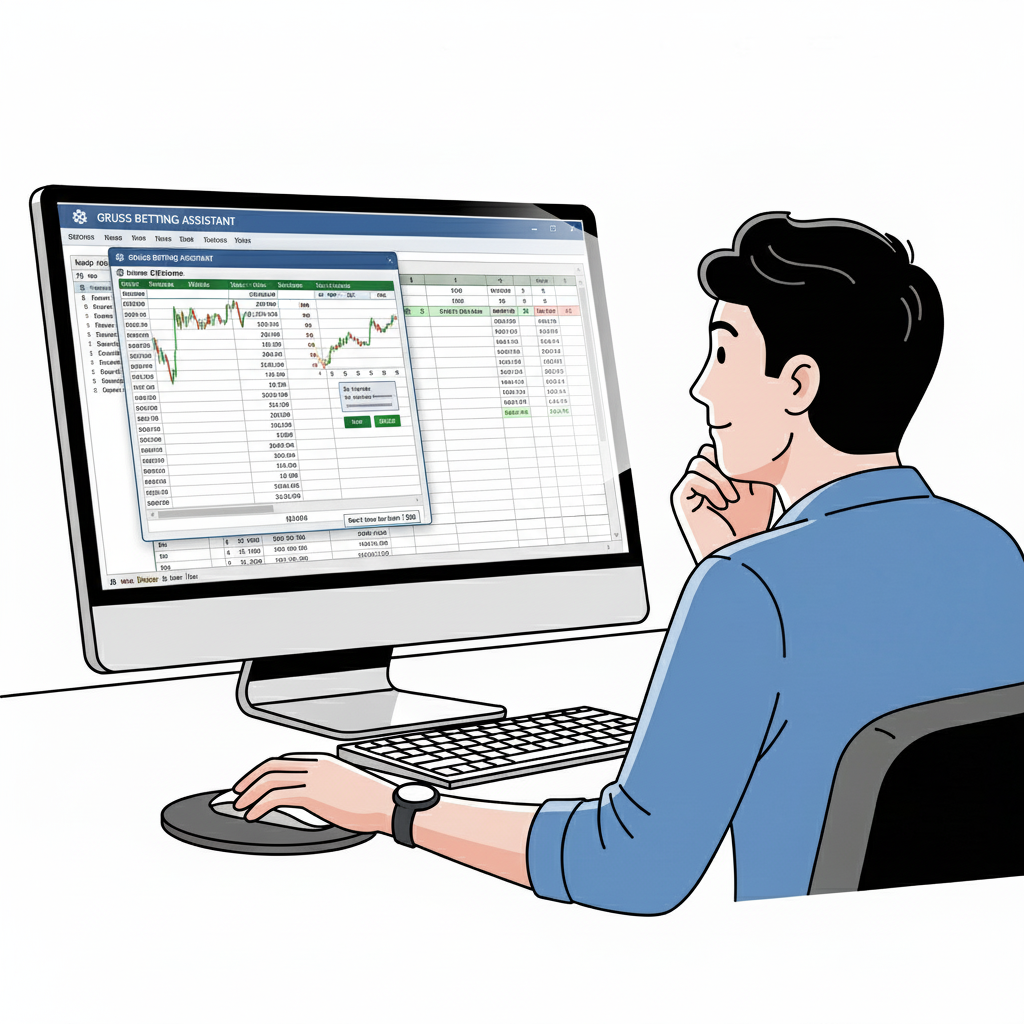
Gruss Betting ASSISTANT Review (2025): Excel Automation & Pricing
If you are serious about profiting on Betfair or BETDAQ, you’ve likely realized that speed and logic are the keys to…
-
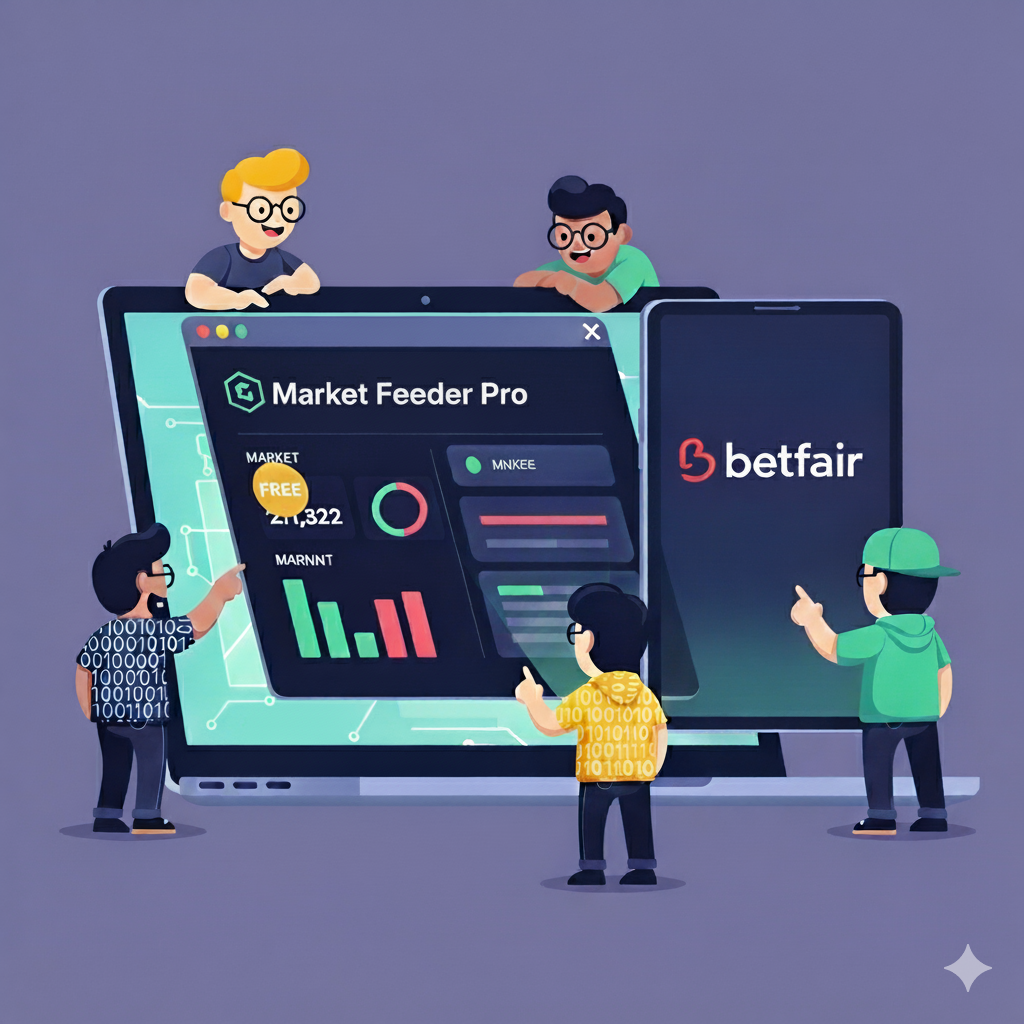
Market Feeder Pro Review: The Powerhouse of Betfair Automation
If you’re a serious sports bettor or trader, you know the Betfair Exchange operates at lightning speed. Consequently, relying on manual…
-

BF Bot Manager Strategy: Automated Lay the Draw (LTD) with Correct Score Insurance
The Brutal Truth of Football Trading: Discipline is the Only Edge The “Lay the Draw” (LTD) strategy is the defining trade…
-

The Definitive Fairbot Review (2025): A UK Trader’s Honest Verdict
As long-time traders on the Betfair exchange here in the UK, we’ve seen countless tools come and go. For years, one…
-

In-Depth BetBotPRO Review (2025): Automate Your Betting?
I remember the early days of my trading journey, manually placing bets for hours, glued to the screen, terrified to miss…
-
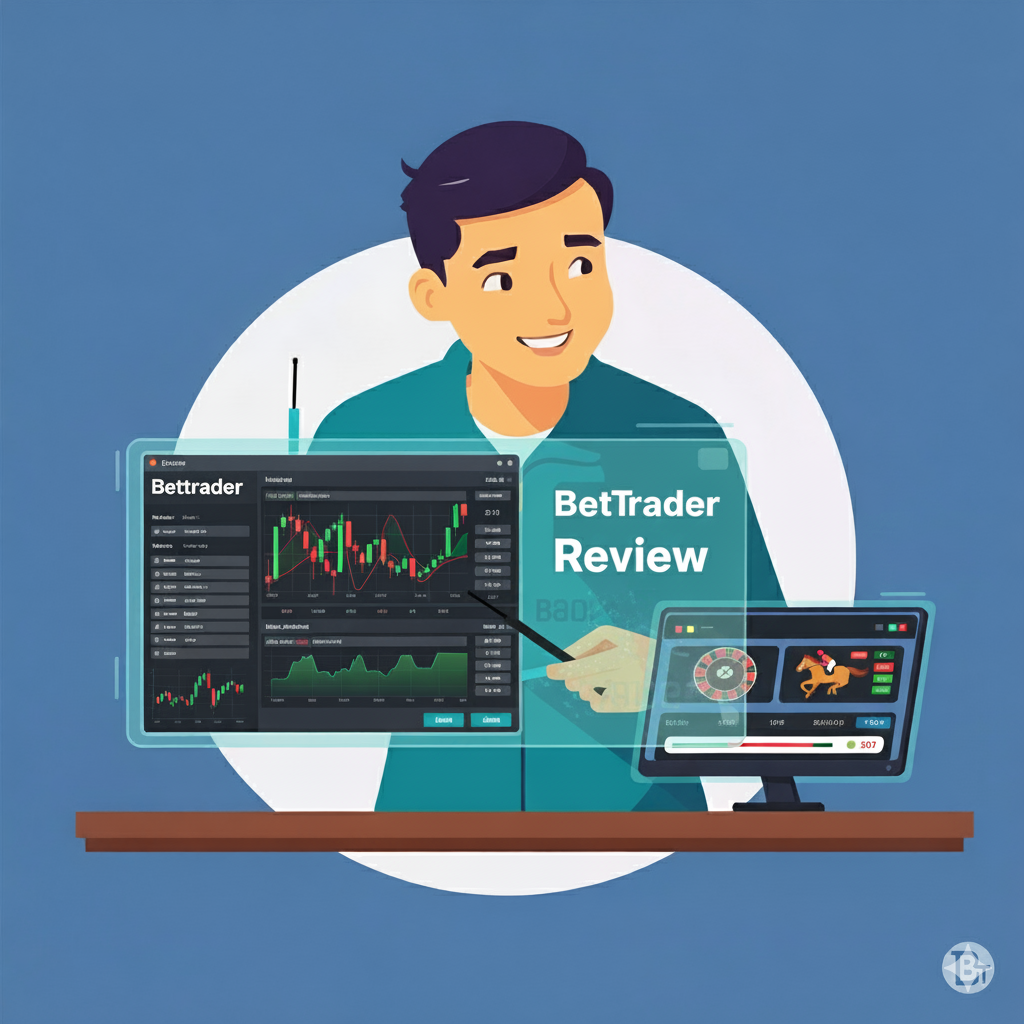
BetTrader Review (2025): Still suitable for Betfair Trading?
I’ll never forget the frustration of trying to trade a big Saturday horse race on the Betfair website. By the time…
